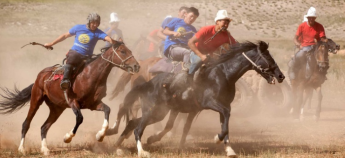Yurt is originally from a Turkic word referring to the imprint left in the ground by a moved yurt, and by extension, sometimes a person’s homeland, kinsmen, or feudal appanage. The Russian called it “yurta” (юрта).
Central Asia : Welcome to my Yurt ♥ Welcome to my Homeland

For those coming from Central Asia especially the semi-nomads in Kyrgyzstan, living in a yurt is still very much part of life. Yurt is originally from a Turkic word referring to the imprint left in the ground by a moved yurt, and by extension, sometimes a person’s homeland, kinsmen, or feudal appanage. The Russian called it “yurta” (юрта).

A yurt in Kyrgyzstan
For those who have traveled to Mongolia and have experience the “ger”, you might say it’s the same thing. Well in away yes, but there is a subtle difference which defines one from the other. The body of the yurt is normally made out of bentwood as is with some gers, but the roof tells the difference. The central part of the roof is called the crown.
A mongolian crown reflects the “buddhist wheel”, whereas in Central Asia the crown known as Shangyrak has an intricate lattice work. Passed from father to son upon the father’s death, the heritage of the Shangyrak can be measured by the accumulation of stains from decades of smoke passing through it. At a national level if you noticed closely, the crown is in the centre of the coats of arms of Kazakhstan flag and the main image on Kyrgyzstan, these are the proud symbols of its heritage.
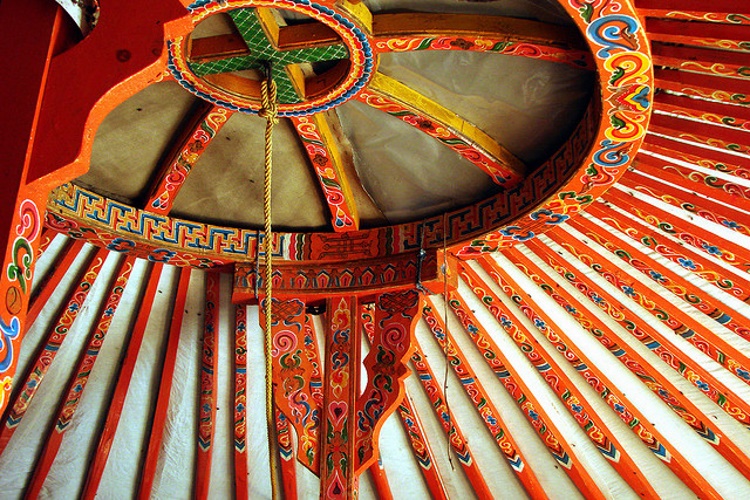
A Mongolian ger crown. Notice the crown or toono in Turkic, adopted the shape of Dharmachakra.
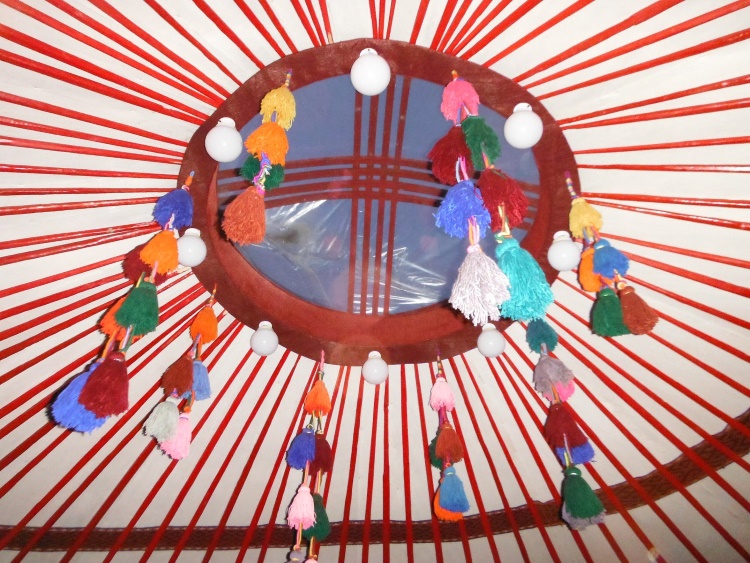
This is the crown shaped of “yurt” in Kazakhstan and Kyrgyzstan. In old Kazakh communities, the yurt itself would often be repaired and rebuilt, but the shangyrak would remain intact, passed from father to son upon the father’s death.
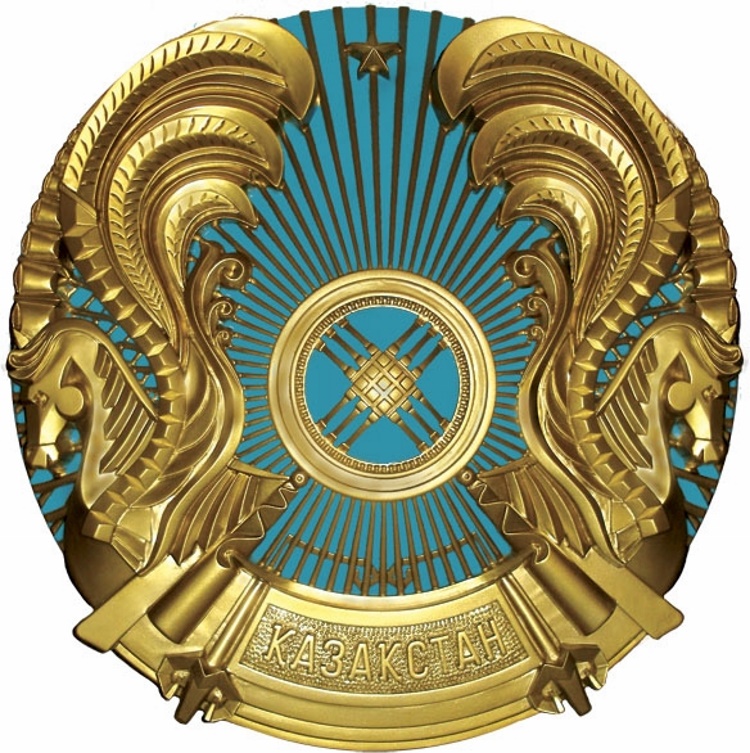
Emblem of Kazakhstan. Noticed the similar shape in the middle of the emblem?
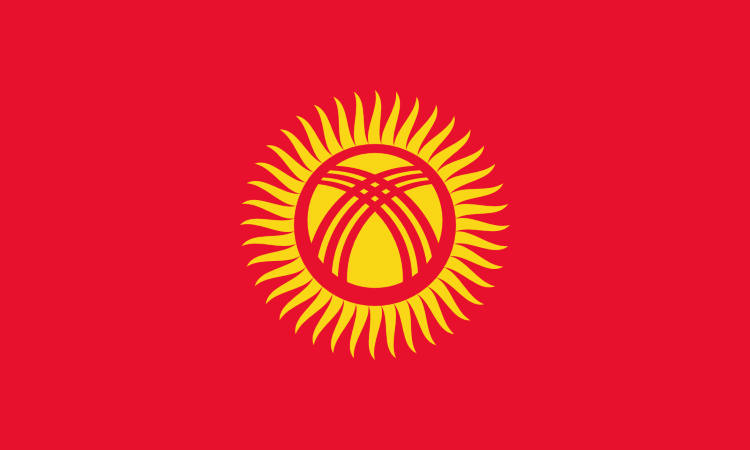
Kyrgyzstan Flag, a simple and proud statement of their origin. Nomads living in yurts are sacred.
These semi-nomads till today herd livestocks for livelihood. Attributing to the extreme weather of the steppe you’d be amaze at how the yurt can stand through the test of time. Imagine extreme heat during summer due to the low treeless grasslands and extreme cold and windy winter attributed to the mountainous range of the steppe.
So how do they sustain? Due to the ingenious circular shape of the yurt, it allows extreme winds to flow around it. The body of the bentwood is sturdy enough to hold the shape. Using skin from livestocks such as camel, sheep and goat to line the walls. The temperature is regulated during summer by a partial opening of the crown letting in air to ventilate, and during winter there is a centerpiece kind of stove which regulates heat evenly in the yurt due to its circular shape.
A yurt can be assembled within a minimum of one up to four hours depending on the size of the yurt. It can fit a family of five up to a fifteen at one go. Making it ideal for the nomads to pack up and go explore new pastures.


A peek into how a traditional yurt would look like inside.
Even the Greek historian Herodotus has written about yurts used by the Scythian people around 440 BCE. Scythians were nomadic people from the land surrounding the Black and Caspian Seas. Italian explorer Marco Polo detailed the gers used by Mongols in the time he lived with them, between 1274 and 1291. Hence many find this experience a spiritual-back-to-the-basics kind of journey.
So would you love to experience living in a yurt the ancient way? The down side to some of the modern wanderer is the idea of a yurt toilet. It is normally an outhouse, literally back to nature.
Well this makes it a tale as old as time ……. if you are able to brave it!
Video Credit to Greg Snell.



